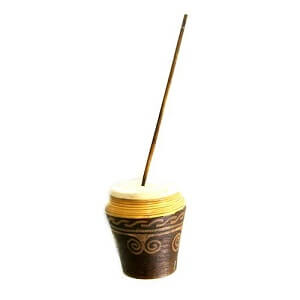Friction Drum
 The friction drum is a type of musical instrument that can be found throughout Africa, Asia, Europe, and South America in various forms. It first appeared in Europe in the 16th century and supported certain religious and ceremonial activities. Actually, its ancestral connection with specific occasions remains in European traditions since then.
The friction drum is a type of musical instrument that can be found throughout Africa, Asia, Europe, and South America in various forms. It first appeared in Europe in the 16th century and supported certain religious and ceremonial activities. Actually, its ancestral connection with specific occasions remains in European traditions since then.
The instrument consists of a single membrane stretched over a soundbox. The player produces sound by creating friction on the membrane which makes it vibrate. The soundbox may be for example a pot, or a jug. To produce sound, the membrane may be directly rubbed with the fingers. Another variation of the instrument uses a stick or a cord attached to the center of the membrane and then rubbed. The cord variation may appear named as “string drum” or “lion’s roar”. In another variation, a waxed or rosined cord affixed to the center of the head replaces the central stick.
The Cuica is one of the better-known versions of the friction drum. Metal, gourd, or synthetic materials are commonly used for its body. It features a single head made of animal skin that is usually six to ten inches in diameter. A slender bamboo stick connects to the middle of the drum head and extends into the drum’s interior, parallel to this head.